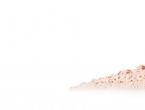The earth had three moons for a long time. What if the earth had two satellites The second moon is near the earth
The moon is a familiar part of the night landscape. She lights the way for couples in love, controls the ebb and flow, and causes werewolves to appear in horror films. But what if our planet had two satellites? Scientists say nothing good.
Take two
Let's start with the fact that our Moon was formed 4.5 billion years ago when a huge asteroid the size of Mars flew into Earth. The debris from the impact flew into orbit and after some time turned into the familiar moon. And people were very lucky that at that time they were not yet on the planet.
A second moon would be a lot of trouble too. First, for it to appear, you also need a good lump from space. But even if you skip the formation period of the second satellite and go to the moment when two moons appear in the Earth's sky at once, there is little positive.
The gravitational pull of the new moon would create tides eight times higher than our current ones, with huge tidal waves larger than anything we've ever seen. This will lead to earthquakes and more volcanic activity that will continue for many years and ultimately lead to the massive extinction of marine life, which will affect the overall ecological situation. In addition, coastal cities such as New York, San Francisco, Sydney, St. Petersburg will cease to exist from the destructive waves.
Lots of water and light
When the situation more or less improves, life on Earth will be completely different. It will be much brighter at night than during the day, thanks to the reflected light of two satellites at once. And night darkness "even gouge out your eyes" will be much less common.

True, some researchers are sure that the Earth already has two or even more satellites. The fact is that the planet "picks up" small asteroids that fly by, and they begin to rotate in the earth's orbit for several weeks or months before they go back to space travel.
Of course, such babies are unlikely to seriously affect what is happening on Earth. But such "colleagues" of the Moon are better than a full-fledged brother who is able to turn our lives around.
Humanity has only now learned that the Earth has one more satellite besides the Moon.
The second satellite of the Earth, astronomers say, differs from the large Moon in that it makes a full revolution around the Earth in 789 years. Its orbit is similar in shape to a horseshoe, and is at a distance comparable to the distance from Earth to Mars. The satellite cannot approach our planet closer than 30 million kilometers, which is 30 times farther than the distance to the Moon.
The relative motion of the Earth and Cruithney in their orbits.
Scientists claim that the Earth's second natural satellite is the near-Earth asteroid Cruithney. Its peculiarity is that it crosses the orbits of three planets: Earth, Mars and Venus.
The diameter of the second moon is only five kilometers, and this natural satellite of our planet will come up to the closest distance to the Earth in two thousand years. At the same time, scientists do not expect a collision of the Earth with the cruithney approaching our planet.
The satellite will pass from the planet at a distance of 406385 kilometers. At this moment, the Moon will be located in the constellation Leo. The satellite of our planet will be visible in full, but the size of the Moon will be 13 percent smaller than at the time of its closest approach to Earth. A collision is not predicted in this case: the Earth's orbit does not intersect anywhere with Cruithney's orbit, since the latter is in a different orbital plane and is inclined to the Earth's orbit at an angle of 19.8 °.
Also, according to the assurances of specialists, in 7899 years our second moon will pass very close to Venus and there is a possibility that Venus will attract her to herself and thus we will lose Cruithney.
Cruithney's new satellite was discovered on October 10, 1986 by British amateur astronomer Duncan Waldron. Duncan spotted him in a picture from the Schmidt telescope. From 1994 to 2015, the maximum annual approach of this asteroid with the Earth occurs in November.
Due to the very large eccentricity, the orbital velocity this asteroid changes much more strongly than that of the Earth, so from the point of view of an Earth observer, if we take the Earth as a reference system and consider it stationary, it turns out that not an asteroid, but its orbit revolves around the Sun, while the asteroid itself begins to describe ahead of the Earth a horseshoe-shaped trajectory resembling a "bob" with a period equal to the period of the asteroid's revolution around the Sun - 364 days.
Cruithney will come back to Earth in June 2292. The asteroid will make a series of annual encounters with the Earth at a distance of 12.5 million km, as a result of which there will be a gravitational exchange of orbital energy between the Earth and the asteroid, which will lead to a change in the orbit of the asteroid and Cruithney will again begin to migrate from the Earth, but this time in the other direction , - it will lag behind the Earth.
(exactly so - in the plural) have occupied scientists for several centuries. Astronomers of the 19th and first half of the 20th century tried to find companions for the moon. However, over and over again, their assumptions and even convincing evidence turned out to be erroneous. Today everyone knows from school that the only natural satellite of the Earth is the space body Moon. Many other candidates are also of interest to astronomers, since they are not fictitious, but real-life objects that were mistakenly assigned the status of a permanent satellite of our planet.
Bolide
The French astronomer Frederic Petit is well known to many people who are fond of studying celestial bodies. He was director of the Toulouse Observatory in the middle of the 19th century. Today Petit is known primarily as a supporter of the theory that the Moon is not the only natural satellite of the Earth, but one of several. According to the astronomer, fireballs (large and fairly bright meteors) were suitable for the role of her companions. Satellite candidates orbited the planet in an elliptical orbit. The most famous is the fireball that Petit observed in 1846. Summarizing the data - his own and other scientists - about the object, the astronomer concluded that the body rotates with a period of 2 hours 45 minutes, with a perigee at a distance of 11.4 km and an apogee at 3570 km.
Despite the fact that the measurements and calculations of Frederic Petit were confirmed by some astronomers, his assumption was soon refuted. In 1851, Urbain Le Verrier presented evidence of the fallacy of the theory of the Toulouse scientist.
New assumptions
Petit was not the only astronomer to try to disprove the conventional wisdom about how many natural satellites the Earth has. His companion in this matter was a scientist from Hamburg, Dr. Georg Walthemat. In 1898, he announced the discovery of a system of small satellites. One of them, according to the scientist's calculations, was located at a distance of just over a million kilometers from the Earth and made one revolution in 119 days. The diameter of the hypothetical satellite was 700 km.
Waltham had expected the second moon to pass across the solar disk in February 1898, and this would prove the researcher was right. The satellite has indeed been spotted by amateur astronomers in Germany. However, none of the professionals observing the Sun that day noticed anything similar.
Another try
Valtematus did not abandon his search. In July of that year, he wrote an article about another candidate for the role of a lunar companion. with a diameter of 746 km, it circulated, according to the calculations of the author of the theory, at a distance slightly exceeding 400 thousand kilometers from our planet. However, these data have not been confirmed either. Valtemata's hypothetical natural satellites could not get the status of real-life objects.
Mystic
The peculiarity of the satellite, "discovered" by Valtematus, was the impossibility of observing it at any other moments, except for the time it passed through the solar disk. The object practically did not reflect light, and therefore was hardly noticeable. In 1918, astrologer Walter Gornold announced the rediscovery of the moon Valtemat. He confirmed his "dark" nature and named Lilith (as, according to Kabbalah, the first wife of Adam was called). The astrologer insisted that the second moon was comparable in mass to the first.
In the scientific world, these statements caused only a smile. Such a massive body would not go unnoticed, since its presence would have a significant impact on the moon, which would be reflected in its movement.

Politics
The natural satellite of the Earth (the Moon) or Mars and Venus, its closest neighbors, have always been associated with some secrets in the minds of people. In the past century, these space objects were often thought of as habitats of alien civilizations or military bases of unfriendly states. Against the background of such assumptions, hypotheses about artificial satellites launched into orbit in an atmosphere of strict secrecy seemed more realistic.
In the middle of the last century, there were rumors of two similar objects. After a while, reports began to appear in the media about their natural origin. The excitement around new satellites died down in 1959, when astronomer Clyde Tombaugh (the scientist who discovered Pluto), after a long study of space around the Earth, announced the absence of any objects brighter than 12-14 magnitudes.
Near-Earth space monitoring
Nowadays, few people do not know what the natural Earth is called. The moon today is recognized as the one and only. However, astronomers constantly observe outer space in the vicinity of our planet. The purpose of such a study is not a search for new satellites, but protection against possible collisions, their prediction, and ensuring the safety of the stations. Clyde Tombaugh was just one of the first to undertake such a study.
Today, the search for space bodies in near-earth space is the goal of several large projects at once. So far, no new natural satellites of the Earth have been discovered in the course of research.
Quasi-satellites
Of course, the Moon is not the only object near our planet. Research in recent years has provided a wealth of information of this kind. There are asteroids that are in orbital resonance with the Earth 1: 1. In the media and popular science literature, they are often referred to as "second moons". The main difference between such objects is the fact that they do not revolve around the Earth, but around the Sun.

A good example of such a space body is the asteroid (3753) Cruithney. He crosses Venus and Mars while in motion. The orbit of the asteroid is highly elongated, but, unfortunately, it never comes close enough to our planet to be available for observation through weak equipment. Cruithney can only be seen with a sufficiently powerful telescope.
Trojans

There is another group of objects that are sometimes designated as natural satellites of the Earth, but are not. These are the so-called Trojans - asteroids moving in the same orbit as our planet, but outstripping or catching up with it. To date, only one such body has been confirmed. This is asteroid 2010 TK7. It is ahead of the Earth by 60º. 2010 TK7 is a small (300 m in diameter) and rather dim object. Its discovery has increased the interest of scientists in the search for Trojans in the vicinity of the Earth.
Optical effect

The question “how many natural satellites does the Earth have” sometimes, although extremely rarely, arises simply when looking at the night sky. Under a certain set of circumstances, the simultaneous presence of several factors overhead, a phenomenon called a false moon can be observed. For this, the full (or almost complete) night luminary must be bright enough. A halo appears around it. The moon's rays are refracted in the ice crystals of cirrostratus clouds and bright luminous points are formed on both sides of the satellite. An inexperienced observer for some moments may believe that where the natural satellite of the Earth (the Moon) or Mars and other planets plow space, new real-life space objects have appeared. However, the illusion will dissipate pretty quickly. The false moon, or parselena, is more like a play of light than it really is.
Dual system

Moon as closest space object to Earth, has always been at the center of many research projects. Of course, not everything is known about her. A lot of controversy is still, for example, caused by the theory of origin. However, it can be safely called one of the most studied objects in space, as well as a marker, a distinctive sign of our home in the Universe. The latter fact is well illustrated by one of the variants of the flag of our planet, which depicts a natural satellite of the Earth.
The most interesting thing is that in the light of relatively recent studies, the status of the moon is not so unambiguous. According to astronomers, the two most studied objects are a binary planet. The natural satellite of the Earth and our cosmic home revolve around the same center of mass. It is located not in the center of the Earth, but at a distance of almost 5 thousand kilometers from it. This hypothesis is supported by the rather impressive ones (and their ratio to the size of the Earth) in comparison with other satellites. An example of a similar system is Pluto and Charon, revolving around the same center of mass and always facing the same side towards each other.

So, today everyone understands the name of the natural satellite of the Earth and that there is only one. The search for his companions left a noticeable mark in the history of astronomy and confirmed the well-known fact: man is never enough that he has. However, it is thanks to this feature that many discoveries of the last century took place.
We all know and love the moon. We're so sure we only have one moon that we didn't even give it any special name. We all have the moon, we have the moon. It is the brightest object in the night sky, and amateur astronomers take great pleasure in mapping its craters and seas. Today it is the second celestial body in the Universe (as far as we know) with human footprints.
What you may not know is that the Moon is not the only natural satellite of the Earth. More recently, in 1997, we discovered another body, 3753 Cruithne, a so-called quasi-orbital satellite of the Earth. This means Cruithney simply does not loop around the Earth in an elliptical shape, like the Moon or the artificial satellites that we launched into orbit. Cruithney revolves around the inner solar system in a horseshoe-shaped orbit (pictured above).
To understand why this orbit is called horseshoe-shaped, let's imagine that we are looking at the solar system and revolving at the same speed as the earth revolves around the sun. From our point of view, the Earth will be stationary. A body in a simple horseshoe-shaped orbit moves towards the Earth, and then turns and leaves. Then he approaches the Earth from the other side and leaves again.
Horseshoe orbits are fairly common for moons in the solar system. Saturn has several such moons, for example.
What's unique about Cruithney is that she sways along her horseshoe. If you look at Cruithney's motion in the solar system, it makes an irregular circle around the Earth's orbit, swinging so far that it peers into the vicinity of Venus and Mars. Cruithney orbits the Sun once a year, but it takes about 800 years for it to complete this irregular circle around the Earth's orbit.
So Cruithney is our second moon. What does it look like? We don't really know. It is only five kilometers across, which is not much different from the size of comet 67P / Churyumov-Gerasimenko, which is currently being escorted by the Rosetta spacecraft on its way to the Sun.
The gravity on the 67P's surface is very weak - a lively gait is likely to send you tumbling into space. That is why it was so important for the Philae lander to use its harpoons to latch onto the surface, and why it bounced from place to place when landing.
Considering that Cruithney for us is a few blurry pixels in the image, it is safe to say that it is included in the list of medium-sized celestial bodies in our system and that any robotic explorer or human will face the same difficulties as Rosetta "And" Philae "on 67P.
If Cruithney hits Earth, the collision will be dire and result in a catastrophic level event similar to what happened at the end of the Cretaceous. Fortunately, this will definitely not happen soon - astrophysicists have shown that although Cruithney can pass very close to us, it is unlikely to hit the Earth. And it will happen in 2750 years.
In 8000 years, Cruithney expects a fairly close approach to Venus. There is a good chance that this will put an end to our free moon, throwing it out of our earthy family.
Cruithney is not everything
The story doesn't end there. Like a good home, the Earth is home to many wayward boulders looking for a gravity well to get closer. Astronomers have discovered a number of other quasi-orbiting satellites that are friends with the Earth and will stay with us for a while before moving on to new pastures.
What can we learn about the solar system from Cruithney? Quite a bit of. Like many other asteroids and comets, it contains physical evidence of how the planets were assembled. Its crazy orbit is perfect for studying how solar system develops under the influence of gravity.

Venus is the possible parent of the Moon
As we noted, until the end of the 20th century, we did not even suspect that celestial bodies could enter such strange orbits and remain there for a long time. They also indicate that such interactions may have occurred when the solar system was forming. And since we think that the terrestrial planets are formed in the process of collisions with such bodies as "Cruithney" and more, this is a new variable.
Cruithney may one day be a landing site for humans, or even a mining site for the rare earth metals that our new technologies desperately need. And most importantly, Cruithney tells us that the solar system is not eternal - and we, it turns out, too.
The science
Scientists have found that our planet once had two moons. Smaller the moon's twin lasted only a few million years, and then collided with our satellite, which we still have the opportunity to observe.
This theory was put forward at a conference on the moon by professor Eric Asfaug(Erik Asphaug) from the University of California Santa Cruz.
Most of the planets in our solar system, with the exception of the Earth, have several satellites. So Mars has 2, Jupiter has 66, Saturn has 62, Uranus has 27, and Neptune has 13.
Scientists still don't know why does the earth have only one natural satellite- Moon. But maybe there were once more of them?
The Moon is the Earth's satellite

According to the theory, the second moon revolved around the Earth at the same speed and distance, and it was slightly sucked in until it collided with another, merging into a single whole.
The tidal forces and gravity of the Sun most likely caused the moons' orbits to become unstable, leading to the collision. This may explain the asymmetry of the lunar crust, since the lunar surface facing the earth is low and flat, and the reverse side is covered with craters and mountains.

The diagram shows the four stages of a collision of two moons about 4 billion years ago
Professor Asfaug believes that the mountainous landscape of the Moon is the remnants of a smaller satellite after a merger. It is assumed that the size of the twin was about one-thirtieth the size of today's moon.
The Earth and the Moon formed between 30 and 130 million years after the birth of our solar system, which happened 4.6 billion years ago.
Last year, scientists at Harvard put forward the theory that the Moon was once part of the Earth, which detached after colliding with another celestial body.

Astronomers recently found three more Earth-like planets orbiting a single star that could possibly support life.
Researchers believe that there may be up to 100 billion Earth-like planets in our galaxy.
The rotation of the moon around the earth
The moon makes a revolution around the Earth in 27.3 days... The Moon's orbit averages 385,000 km from Earth.
Like other planets in the solar system, the moon's orbit is not round, but elliptical.
At the closest point, called perigee, the Moon is 364,397 km from Earth. At the far point, called the apogee, it is 406,731 km from our planet. When the Moon is full and closest to Earth, it appears larger and brighter.




